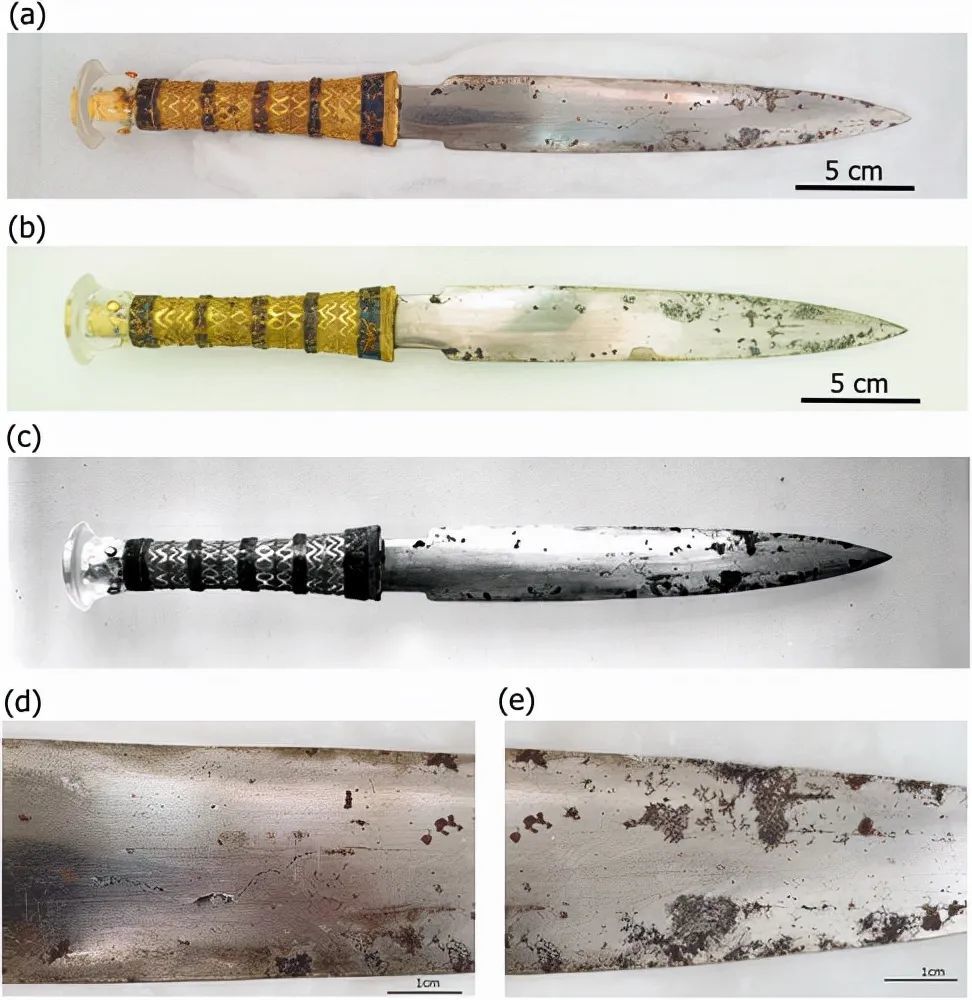
On November 29, 1922, in the Valley of the Kings in Egypt, a tomb that had never been stolen for more than 3,000 years was discovered and opened by the British Howard Carter, and more than 5,000 precious funerary objects shocked the entire Western world and opened the modern era of Egyptology.
What is even more shocking is that the first few people to enter the tomb have died for various reasons, many people think that it is because they have been cursed by a terrible curse, and the "curse of the pharaoh" has been hyped up and frightening; and the name of the tomb owner Tutankhamun is also well known, becoming the most prestigious Egyptian pharaoh, although he was only 19 years old when he died and ran the country for less than 10 years.
Among the more than 5,000 artifacts unearthed in Tutankhamun's tomb, there is a mysterious iron dagger that has not yet rusted – some may wonder how ancient Egypt did not enter the Iron Age until about 600 BC, how could it have had iron tools more than 1300 YEARS BC? Could it be that the excavations are fake artifacts?
No one is faking it, and the iron dagger in Tutankhamun's tomb is definitely a real iron dagger.
The so-called Iron Age refers to the era when human beings generally mastered iron smelting technology and began to use iron on a large scale. The earliest entry into the Iron Age in the world was the ancient Hittite Kingdom of Asia in the 14th century BC, while China began to use iron on a large scale in the late Spring and Autumn period of the 5th century BC.
But before that, iron tools appeared in many parts of the world, such as the iron-bladed copper cymbal unearthed in China in the 1970s, which was made by the Shang Dynasty in the 14th century BC; the earliest iron tools can be traced back to the Gelzin culture of Egypt's pre-dynastic period 5200 years ago, and archaeologists have found nine small iron beads carefully hammered in tombs.
But these irons were not smelted at high temperatures, because humans at that time had not yet mastered the heating of iron ore to a temperature that could be smelted, so the use of meteoric iron, the iron dagger excavated from the tomb of Tutankhamun, has been speculated to be made of meteoric iron. At this time, the value of iron is much higher than that of gold, so for the ancient Egyptians, the iron dagger is the most valuable of the gold products full of "tombs", so it is necessary to use gold as a handle and sword scabbard.
If you want to travel back to that era, don't bring gold with you, just bring a few stainless steel kitchen knives - you can cut melons and vegetables during the war, be invincible, cut those bronzes to the point of crying wolf, or give them to the monarchs of that time as a step forward.
Scientists have been studying the Tutankhamun dagger for years, and in 2016, a team of researchers finally confirmed that the iron came from meteoric iron, which contains metals such as iron, manganese and nickel, as well as sulfur, zinc and chlorine.
Recently, a team of scientists from Japan and Egypt conducted a more in-depth study, using non-destructive X-rays to "snoop" into the inside of the dagger and found a unique structure with a Wei Deman pattern, thus confirming that the iron came from an iron meteorite called octahedral meteorite.
Octahedral meteorite is the most common iron meteorite, after slow cooling inside the parent asteroid, the formation of 0.2 mm to 50 mm, mixed with nickel grain and conical stone strip structure, after polishing and etching will present a classic Weidmann pattern, can see the crossed line and flaky structure of the conite, and can be determined according to the size of the conical stone flake structure.
According to clay tablets written in Akkadine found in Amarna, Egypt, the dagger was given to Tutankhamun's grandfather by King Mitanni, so the meteoric iron may have fallen to Mitanni, which is now Syria.
So since it is made of iron, why did the Tutankhamun iron dagger bury it in the ground for 3400 years without rusting? This is the credit of nickel in meteoric iron, because nickel is slowly oxidized at room temperature, so it is generally considered to have corrosion resistance, has been used as a variety of surfaces for electroplating, nickel in meteorite iron after the formation of an oxide film, can prevent further rust of iron, so there is only a small amount of rust for more than 3,000 years.
The study was published Feb. 11 in the journal Meteorology and Planetary Science.
标题:The manufacture and origin of the Tutankhamen meteoritic iron dagger
Stay tuned: